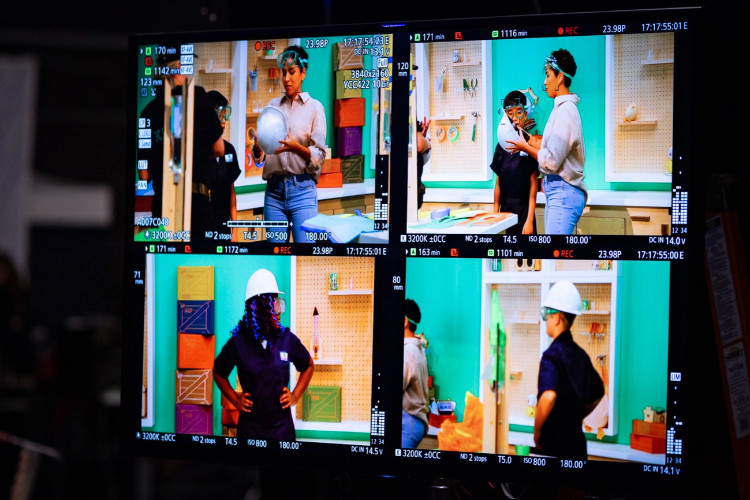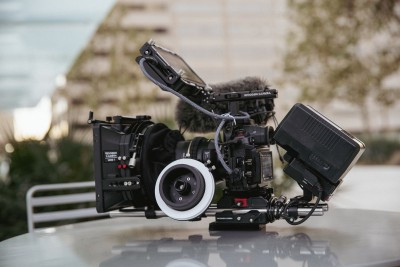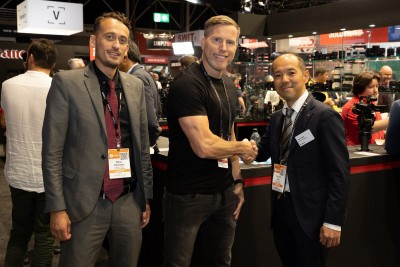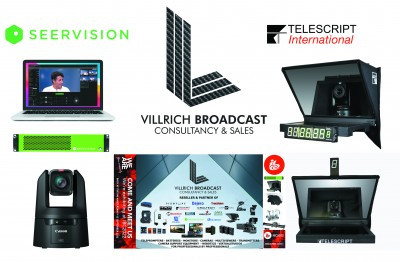Eye-to-eye: 2011 highlights

Author: Bob Pank#
Published 1st January 2012
“Broadcasters must climb up the ladder into high definition or they’ll get their ankles chewed by the computer industry”. Memorable quote from a manufacturer of video standards converters nearly 30 years ago when NHK was trying to establish its original 1125-line (1080-active) 5:3 aspect-ratio ‘Hi-Vision’.
Well it happened. 2011 was the year ‘high-definition’ became the new ‘standard-definition’ thanks to the push effect of competitive HD production equipment pricing and the pull effect of bigger, better and more affordable display screens.
2011 was also the year when the internet showed its potential to become the most cost-efficient route for delivery of television content to the home. The transition will take several years and will enormously widen viewer choice, not least in the context of ‘catchup TV’. Whether the internet completely replaces terrestrial and satellite delivery for the national public-service channels will probably depend as much on national topography as on technology.
From 2 via 8 to 33 megapixels
The ankle-chewing continues, not because the broadcast industry is in competition with the computer trade but because both are part of a single industry (electronics) in which, earthquakes included, nothing stands still. 1080-line HD looks set to have a healthy future but not in isolation.
This was the year when Canon, JVC, Panasonic and Sony rolled out a viable route from today’s 2 megapixel HDTV into a 33 megapixel Super Hi-Vision future. This is a 3820 x 2160 (4 x 2K if you prefer approximations) 8 megapixel bridging format. Panasonic’s 4 x 2K 152 inch plasma, introduced in prototype at IBC and shown again at SATIS, looked hugely impressively. At nearly 2 metres high, it is compact enough to pass through a standard doorway provided the supplier has a big enough vehicle to make the initial delivery.
NHK continued to promote the 7680 x 4320 pixel (8 x 4K) ‘Super Hi-Vision’ concept which it hopes broadcasters will eventually adopt to deliver IMAX sized images to the home. So what kind of domestic environment would accommodate an IMAX screen? Maybe that’s missing the point. Super-Hi-Vision seemed absurdly high resolution when first demonstrated at NAB and IBC back in 2006. Five years on, its 33 megapixel resolution is what any desktop computer user will be expect to be working with 10 to 15 years from now though not necessarily in 16:9 aspect ratio.
Canon’s new EOS C300 pulled very heavy crowds to its first European showing...at SATIS in Paris, 8-10 November. Not much bigger than a standard digital single-lens reflex camera, it has an 8.3 megapixel Super 35 millimetre CMOS sensor allowing 4:2:2 MPEG-2 MXF video recording at 50 megabits per second on to dual Compact Flash memory cards. A third slot memory takes an SD card to store user presets. Canon claims that the C300 can produce low-noise images at up to ISO 20,000 sensitivity. I will pass in silence for now over the new breed of ultra-low cost battery-powered flyable HD camcorders but this could be an interesting category to study during 2012.
Widescreen
Philips proposed an interesting direction at CES in January 2011 by exhibiting its ‘Cinema 21:9’ 58 inch LED-backlit LCD. JVC has also expressed support for the 21:9 aspect ratio and is expected to commence sales of a 50 inch in Q4 2011. Both screens are 3D capable. Having watched and greatly enjoyed several Cinemascope productions in letter-box format on a 40 inch 16:9 display, I would be an enthusiastic convert to 21:9 both for television and as an appendage to a computer monitor.
No sign of 21:9 at NAB or IBC this year but, on 5 September, the US Consumer Electronics Association announced its support. CEA-861 establishes protocols, requirements and recommendations for the use of uncompressed digital interfaces by consumer electronic devices such as digital televisions, digital cable, satellite or terrestrial set-top boxes, and related peripheral devices. The CEA's Video Systems Committee has begun developing specifications for signaling the presence of 21:9 aspect ratio video.
Cinemascope notwithstanding, the most memorable television display I saw this year was in the foyer of the Peppermill restaurant in Las Vegas during NAB. Three 16:9 screens mounted side by side and fed from a single source: 48:9. You could see the joins but that was satisfactory for the ‘electronic wallpaper’ content.
The total number of regular 3D broadcast television channels accessible via traditional terrestrial, satellite or cable reached 31 during 2011: Australia 1, Belgium 1, Brazil 1, Canada 1, Europe-wide 3, Finland 1, France 1, Germany 2, India 1, Israel 1, Japan 2, Mexico 1, Poland 4, South Korea 1, Spain 1, Sweden 1, Turkey 1, UK 1, USA 6. Sky 3D was the pioneer, having started officially on 1 January 2010. This figure excludes experimental ‘one-offs’ by several broadcasters putting their toes into the 3D pond.
3D sells very badly in high street stores, being the one fuzzy screen among an array of clean and attractive 2D displays...unless you ask to try the obligatory nose-wear. If you are not accustomed to wearing specs, the polarising filters are a nuisance. And if you do wear them, a bigger nuisance. Autostereoscopic screens are the obvious way to go but they form no part of this year’s story.
Definitely not. Tape is certainly giving way to optical disc, rigid-magnetic-disc and solid-state memory for content capture but the resultant deluge of data files have to be archived somewhere and the hot favourite remains, you guessed it, tape. Linear Tape Open in its fifth iteration, LTO-5, currently dominates the market with its native capacity of 1.5 terabytes per cartridge. Sony this year proposed an optical-disc-stack format for long-term archiving, which certainly has potential.
The trade shows
On the exhibitions front, the low inherent light level at the London BVE show persuaded me, after the event, to invest in a more sensitive digital snapshot camera: a Canon Ixus 117HS with a 12 megapixel CMOS imager. To my surprise and considerable glee, this proved capable of shooting very satisfactory 1920 x 1080 pixel 24p video. Another first for 2011 as HD video capture is now a standard feature on practically every modern consumer digital camera. Mount the thing on a tripod and you can get seriously decent results, apart from the audio.
April 2011 was one of the coolest ever Las Vegas NAB Spring Conventions, warmed up for some by the prospect of queueing for an Apple iPad 2. This device allows 720p video capture and touchscreen editing for $499 plus local tax (hardware) and £2.99 (iMovie software). An increasing number of manufacturers have recognised the iPad’s potential as a control device for their own products and (suitably clamped to the booth) as an interactive information source during an exhibition.
IBC was most notable this year for being crowded. It was allegedly and quite believably the best attended in the show’s history. 2012 will mark 20 years since IBC relocated from Brighton to Amsterdam. Another 2012 talking-point will be the relocation of BVE London from Earls Court (February 2012) to the London Docklands Excel (for 2013). Earls Court is to be demolished to make way for housing, a retail area and possibly a new exhibition centre.
































